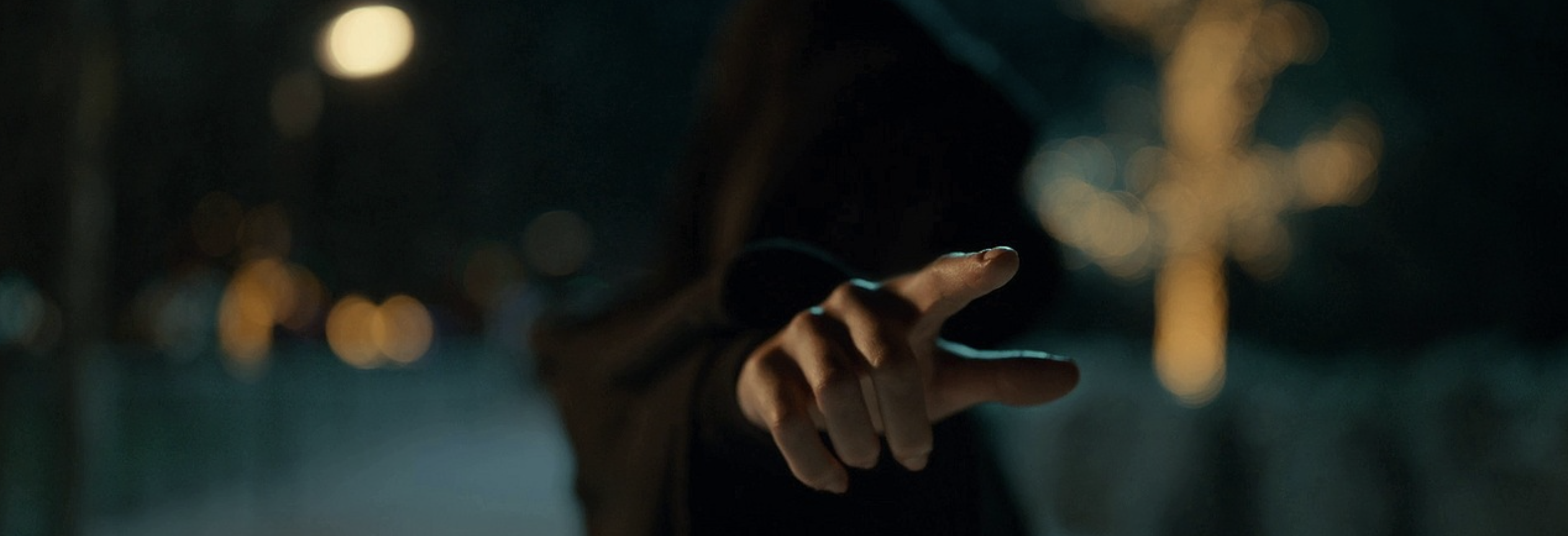In an explosive twist, a Steven Moffat episode turns out to be quite good.
- Sweet Christmas Baby: The Ambulance struggles to explain Dr Who’s vitals because he’s a Time Lord, and a complex space-time event, which is quite common, as computer reactions to Dr Who go, but then the Ambulance, after calmly noting her name and that she’s over 3000 years old, has the same reaction to trying to analyse Ruby’s next of kin. Having invoked her origin story, snow once again appears out of nowhere — but this time, freezes in mid-air. Hard to tell if that’s relevant, or just a Moffatism — this happened before, very similarly, in Twice Upon a Time. 1I hadn’t noticed this — it’s Ash Taylor who I first saw make the observation that the snow freezing in mid-air had happened in a Steven Moffat-penned episode before.
- The Pretenders: The Ambulance takes the name and symbolism of something that helps you, but it kills you. The casket AI pretends to be the person whose remains it’s attached to. We live in a blip of history where religions pretend not to be armies. The Villengard algorithm pretends there’s a war on for profit. Mundy and Canterbury both pretend not to like each other, and their delayed confession costs Canterbury his life. The line from the Philip Larkin poem “An Arundel Tomb” Dr Who quotes — “what will survive of us is love” — is not actually meant to be read the way he interprets it; the poem is actually quite sad.
- Existence of Sunday Implies Existence of Mundy: The actor already announced to be playing a new companion in the 2025 series joins us here early, playing Anglican Marine Mundy Flynn. The connection between her and Ruby’s names is noted. (Worth noting: Varada Sethu didn’t know she’d be back, or a companion at all, until months later.)
- Let’s evolve Theory Two: If Ruby Sunday is an experiment, engineered to be the perfect companion to infiltrate Dr Who’s TARDIS on behalf of the Trickster or their Brigade… No sensible scientist runs just the one experiment, right? I reckon Mundy Flynn is another experiment from whatever produced Ruby Sunday.
Bonus thought: Ruby is very much in the Rose style of companion. But Mundy has major traits in common with Amy (a lost love,) Clara (an early appearance,) and Rita from The God Complex (doesn’t join the TARDIS even though you might consider her a prime candidate.) Keep an eye out, perhaps, for a character with a name like “Tuesday” who’s in the Chibnall style. (Which one’s the Wolverine to the other’s Deadpool?)
- Let’s evolve Theory Two: If Ruby Sunday is an experiment, engineered to be the perfect companion to infiltrate Dr Who’s TARDIS on behalf of the Trickster or their Brigade… No sensible scientist runs just the one experiment, right? I reckon Mundy Flynn is another experiment from whatever produced Ruby Sunday.
- Still Figuring It Out: Dr Who is very energetic, can’t sit still, doesn’t let himself take more than two minutes to admire the dawn of Kastarion 3. Maybe he can be this version of himself again after his last face did the healing, but after making such a point of how self-destructive this is… We good here, Doc?
- Calm Down, The Actress Is Just Called That: Susan Twist’s biggest role yet here, as the AI running the Ambulance.
- I think that locks Theory Three down for me: I think she’s part of some kind of cosmic corrective, the spellcheck chasing down a typo. But has that cosmic corrective corrupted the Villengard algorithm, or is it the Villengard algorithm? Does it perceive Dr Who’s meddling as a threat to it in some way? Or is the Villengard stuff just another Moffatism, like so many things in this episode?


